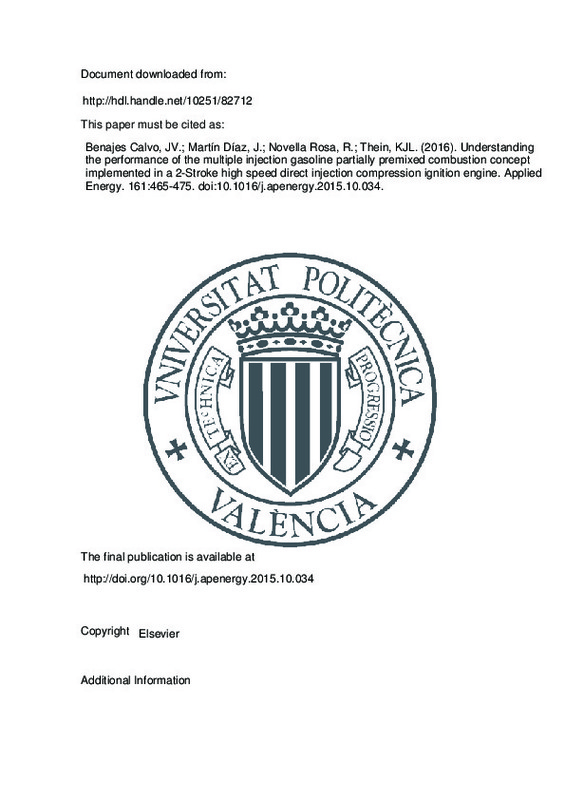JavaScript is disabled for your browser. Some features of this site may not work without it.
Buscar en RiuNet
Listar
Mi cuenta
Estadísticas
Ayuda RiuNet
Admin. UPV
Understanding the performance of the multiple injection gasoline partially premixed combustion concept implemented in a 2-Stroke high speed direct injection compression ignition engine
Mostrar el registro sencillo del ítem
Ficheros en el ítem
| dc.contributor.author | Benajes Calvo, Jesus Vicente
|
es_ES |
| dc.contributor.author | Martín Díaz, Jaime
|
es_ES |
| dc.contributor.author | Novella Rosa, Ricardo
|
es_ES |
| dc.contributor.author | Thein, Kévin Jean Lucien
|
es_ES |
| dc.date.accessioned | 2017-06-13T09:04:50Z | |
| dc.date.available | 2017-06-13T09:04:50Z | |
| dc.date.issued | 2016-01-01 | |
| dc.identifier.issn | 0306-2619 | |
| dc.identifier.uri | http://hdl.handle.net/10251/82712 | |
| dc.description.abstract | The newly designed Partially Premixed Combustion (PPC) concept operating with high octane fuels like gasoline has confirmed the possibility to combine low NOx and soot emissions keeping high indicated efficiencies, while offering a control over combustion profile and phasing through the injection settings. The potential of this PPC concept regarding pollutant control was experimentally evaluated using a commercial gasoline with Research Octane Number (RON) of 95 in a newly-designed 2-Stroke poppet valves Compression Ignition (Cl) engine for automotive applications. Previous experimental results confirmed how the wide control of the cylinder gas temperature provided by the air management settings brings the possibility to achieve stable gasoline PPC combustion at low and medium speed conditions (1250-2000 rpm) for the whole load range (3.1-10.4 bar IMEP) with good combustion stability (Coefficient of Variation (Coy) of IMEP below 3%), high combustiOn efficiency (over 97%), and low NOx/soot levels. In this context, present research focuses on the two main specific drawbacks of this concept. Firstly, the high Brake Specific Fuel Consumption (BSFC) due to the work required by the mechanical supercharger since the turbocharging system does not provide the suitable pressure ratio at low speeds. Secondly, the high level of noise generated by the combustion process, especially at high loads. Therefore, a dedicated analysis has been carried out to fully exploit the benefits of the gasoline PPC concept combined with the innovative 2-Stroke engine architecture with the aim of identify and break the most relevant trade-offs. | es_ES |
| dc.description.sponsorship | The authors kindly recognize the technical support provided by Mr. Pascal Tribotte from RENAULT SAS in the frame of the DREAM-DELTA-68530-13-3205 Project. | en_EN |
| dc.language | Inglés | es_ES |
| dc.publisher | Elsevier | es_ES |
| dc.relation.ispartof | Applied Energy | es_ES |
| dc.rights | Reserva de todos los derechos | es_ES |
| dc.subject | Compression ignition engine | es_ES |
| dc.subject | 2-Stroke engine | es_ES |
| dc.subject | Gasoline PPC concept | es_ES |
| dc.subject | Emission control | es_ES |
| dc.subject | Engine efficiency | es_ES |
| dc.subject.classification | MAQUINAS Y MOTORES TERMICOS | es_ES |
| dc.title | Understanding the performance of the multiple injection gasoline partially premixed combustion concept implemented in a 2-Stroke high speed direct injection compression ignition engine | es_ES |
| dc.type | Artículo | es_ES |
| dc.identifier.doi | 10.1016/j.apenergy.2015.10.034 | |
| dc.relation.projectID | info:eu-repo/grantAgreement/Renault, S.A.S.//DREAM-DELTA-68530-13-3205/ | es_ES |
| dc.rights.accessRights | Abierto | es_ES |
| dc.contributor.affiliation | Universitat Politècnica de València. Instituto Universitario CMT-Motores Térmicos - Institut Universitari CMT-Motors Tèrmics | es_ES |
| dc.contributor.affiliation | Universitat Politècnica de València. Escuela Técnica Superior de Ingenieros Industriales - Escola Tècnica Superior d'Enginyers Industrials | es_ES |
| dc.contributor.affiliation | Universitat Politècnica de València. Escuela Técnica Superior de Ingeniería del Diseño - Escola Tècnica Superior d'Enginyeria del Disseny | es_ES |
| dc.description.bibliographicCitation | Benajes Calvo, JV.; Martín Díaz, J.; Novella Rosa, R.; Thein, KJL. (2016). Understanding the performance of the multiple injection gasoline partially premixed combustion concept implemented in a 2-Stroke high speed direct injection compression ignition engine. Applied Energy. 161:465-475. https://doi.org/10.1016/j.apenergy.2015.10.034 | es_ES |
| dc.description.accrualMethod | S | es_ES |
| dc.relation.publisherversion | http://doi.org/10.1016/j.apenergy.2015.10.034 | es_ES |
| dc.description.upvformatpinicio | 465 | es_ES |
| dc.description.upvformatpfin | 475 | es_ES |
| dc.type.version | info:eu-repo/semantics/publishedVersion | es_ES |
| dc.description.volume | 161 | es_ES |
| dc.relation.senia | 323674 | es_ES |
| dc.identifier.eissn | 1872-9118 | |
| dc.contributor.funder | Renault, S.A.S. | es_ES |







![[Cerrado]](/themes/UPV/images/candado.png)

